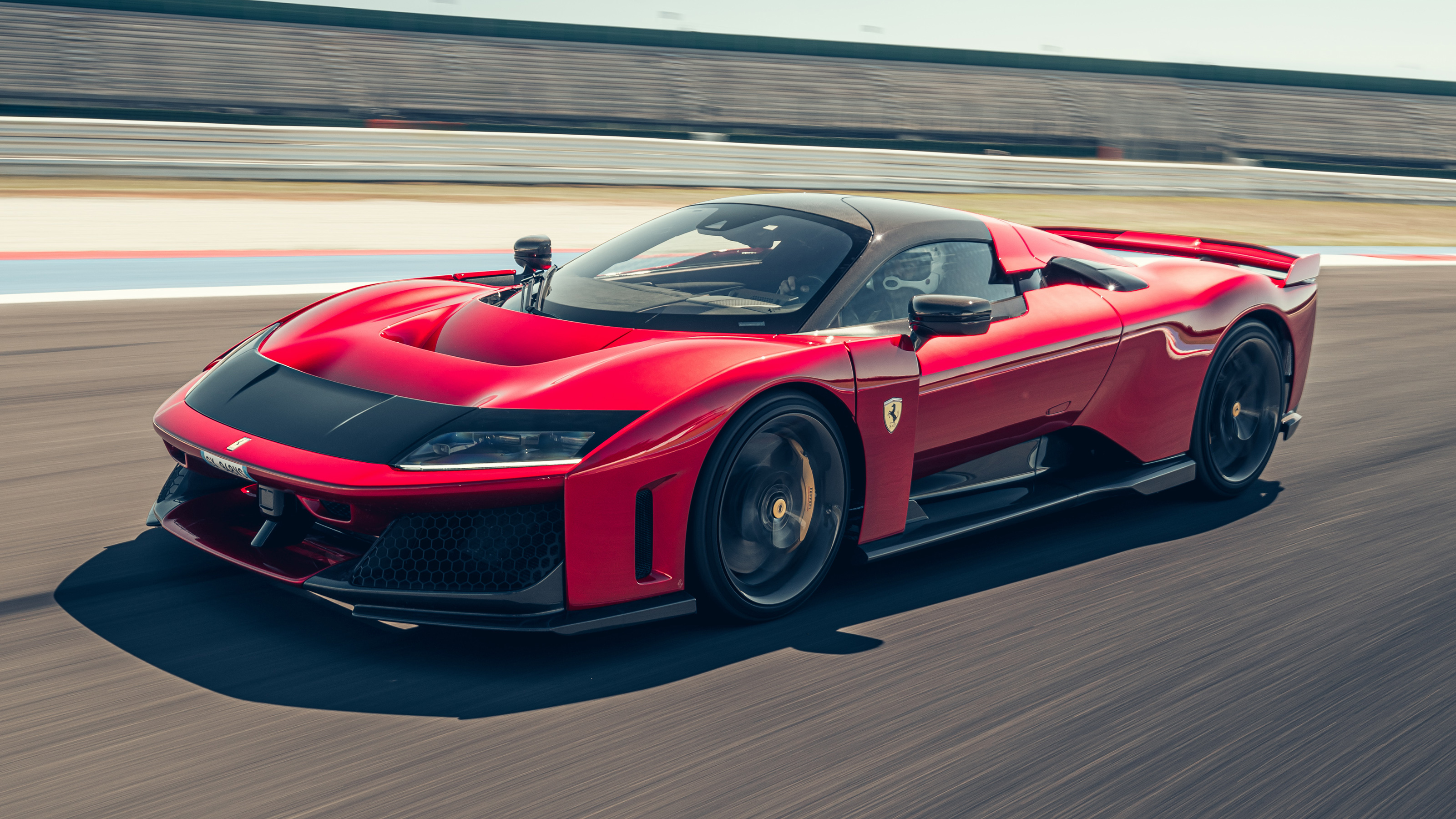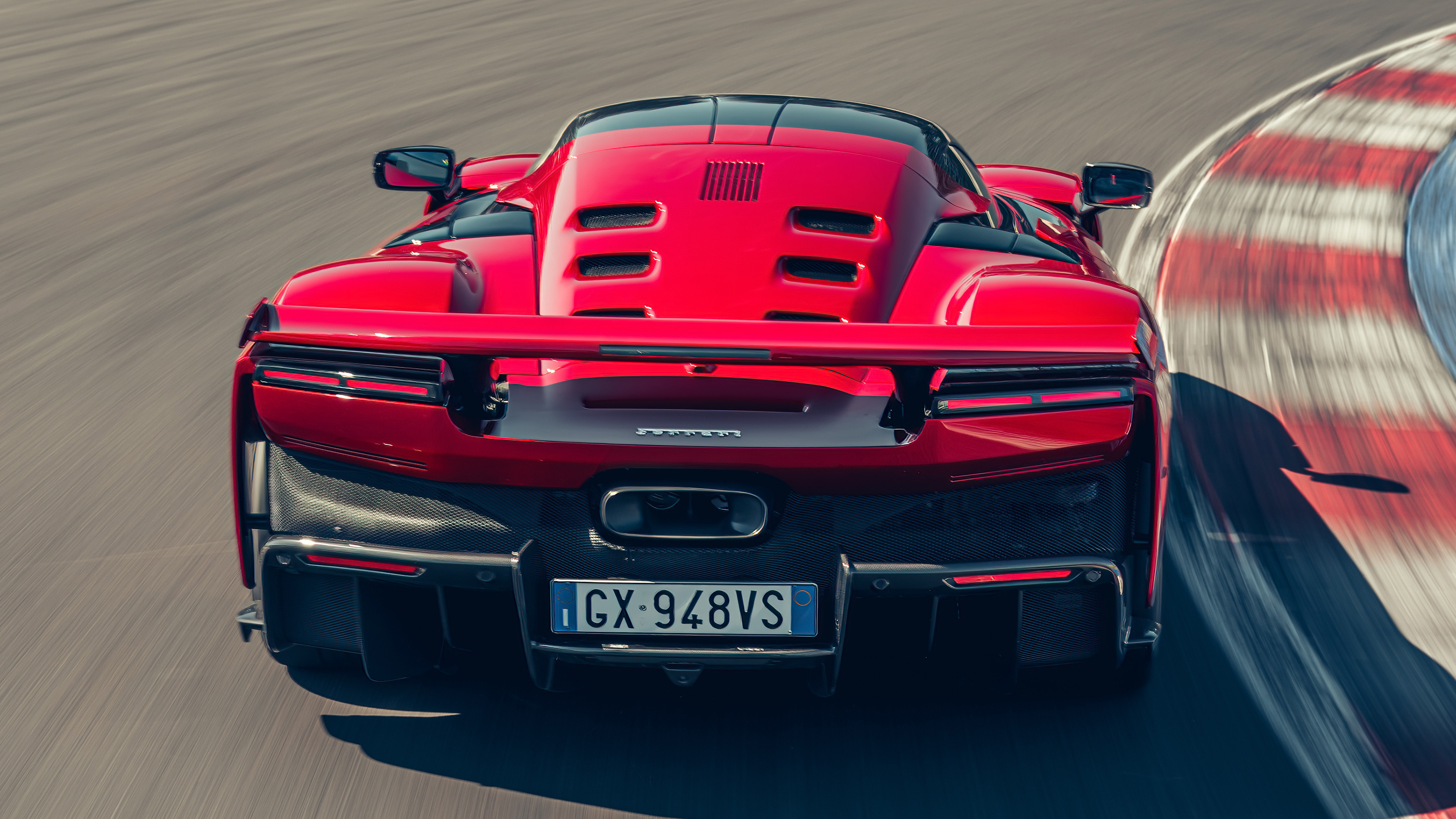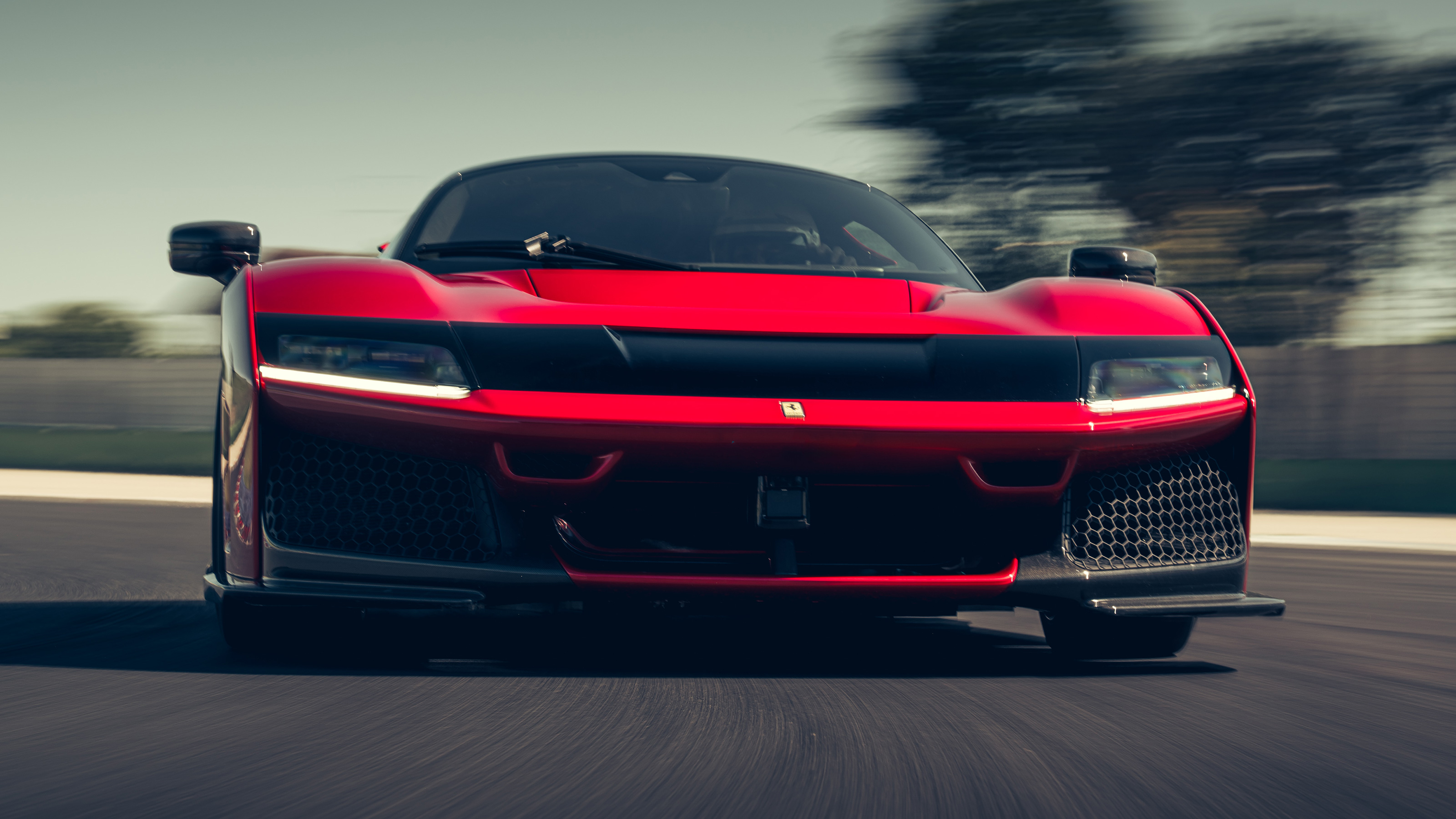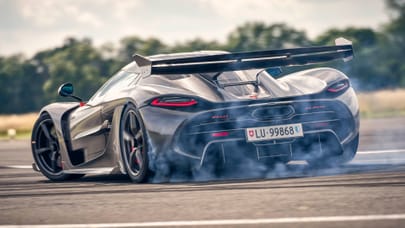
Ferrari F80 review
Good stuff
Dynamics polished to perfection but raw excitement perfectly preserved
Bad stuff
Complex powertrain is magnificent, but can’t give full deployment at all times
Overview
What is it?
The new ultimate Ferrari. The F80 follows 288 GTO, F40, F50, Enzo and LaFerrari. It marks 80 years of Ferrari being, well, the car everyone wants but also makes a statement for the here and now and for the company’s future.
Essentially, this is the best car Ferrari knows how to make in 2025 when silly little things like monetary constraints are put to one side. Moreover, it sets a new path for Ferrari’s dynamic fingerprint and design language. Production will be limited to 799 units.
The relentless pursuit of what’s next really defines Ferrari. For a company with such a rich history they rarely get caught looking wistfully towards their back catalogue for inspiration. Okay, so the 12Cilindri has a hint of Daytona in terms of design, but while the world pines for analogue and manual gearboxes, Ferrari just follow the path to ultimate performance.
Which means a big, normally aspirated V12 just wouldn’t be right for F80. Purists may wince but the 3.0-litre twin turbocharged V6 plus three electric motors is, strangely, much more closely aligned to the F80’s mission statement.
It’s quite the motor in its own right, too. The 120-degree architecture with two e-turbochargers within the vee means the F163CF engine is extremely compact and can be mounted incredibly low in the chassis. It revs to 9,200rpm, those e-turbos (each featuring an electric motor between the turbine and the compressor housing) eliminate lag for proper normally-aspirated response times, yet its tiny capacity produces 888bhp all on its own.
Supported by an electric motor affixed to the bottom of the engine, plus a further two electric motors for the front axle, the F80 can unleash 1,183bhp, get from 0-62mph in 2.15 seconds, 0-124mph in 5.75-seconds and vmax at 217mph.
But… no V12 noise!? Boo, hiss etc.
Well, sure. But don’t forget the 288 GTO and F40 both had twin-turbo V8s and nobody gets too upset about that. Plus, the V6 allows such huge aero performance that Ferrari say the benefits far outweigh the less orchestral engine note.
The F80 features a carbon tub with aluminium subframes and the engine and eight-speed dual-clutch box are titled 1.3 degrees to the centre line to allow the biggest diffuser possible. The venturi is 1.8-metres in length – as compared to just 60cm in LaFerrari – and the F80 can generate 1,050kg of downforce at 155mph.
The F80 features inboard suspension with sophisticated Multimatic dampers that are absolutely crucial to the aero performance. The dampers each feature an electric motor and can actively apply force to the damper rod – helping to create the perfect ride height and eliminating the need for anti-roll bars. We’ve seen them before in the Purosangue but the F80 perhaps shows the full range of their potential.
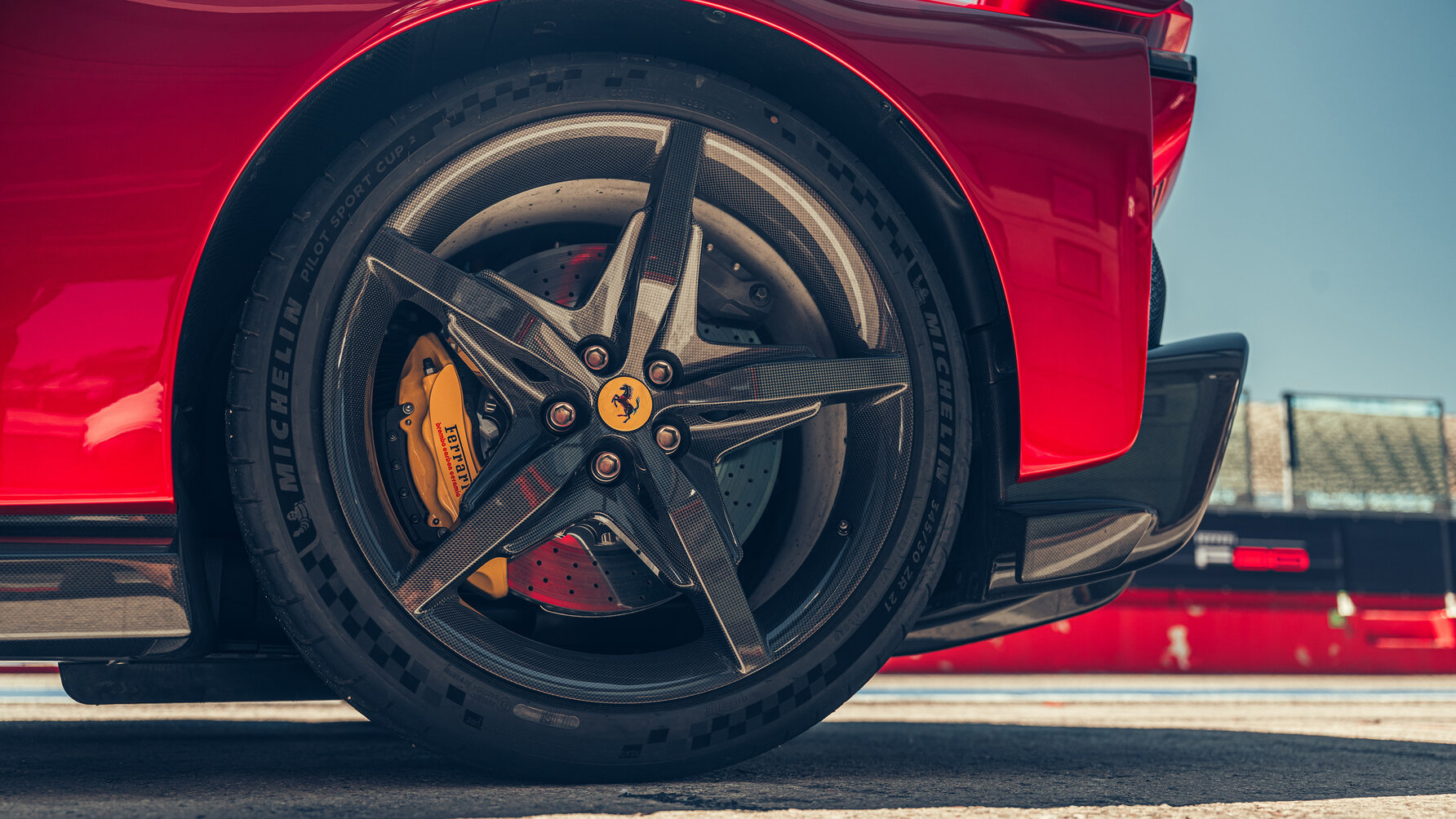
There’s also active aero and the huge rear wing has 22-degrees of motion from high downforce mode to low drag. Interestingly, there’s no way for the driver to manipulate this. You want the wing up to look cool? Drive faster.
Fantastic tech, but where’s the emotion?
Present, correct and super-powered by the F80’s quite startling capabilities and superbly honed touch points. The new CCM R Plus brakes are phenomenal and you’d never guess the system is juggling regen and friction discs. The steering – yes, even with the oblong steering wheel – is fantastic. So clean and alert but calm and painting a superb picture of what’s going on at ground level.
Oh, and the gearbox is next level. Forget the best PDK from Porsche – or, indeed, anybody else’s – the F80 has the greatest paddle shift ‘box ever fitted to a road car. It’s like a full-on race ‘box, but somehow it runs faster and cleaner, and because there’s so much torque after every shift the acceleration feels like it’s exponentially growing.
As usual with Ferrari, the F80 is highly configurable. The manettino allows you to switch between Wet, Sport, Race, CT Off and ESC off, plus you can press the rotary switch to control the dampers. With the Multimatic system you can select Hard, medium and soft settings even in Race, CT Off and ESC off, which is a great touch.
Forget the best PDK from Porsche... the F80 has the greatest paddle shift ‘box ever fitted to a road car
Opposite the manettino there’s capacitive touch controls for the powertrain, too. The default is Hybrid mode, then Performance and finally Qualifying, which gives you everything the F80 can summon from its electric motors for one lap. There’s also a Boost Optimisation function that allows you to plot a circuit and let the F80 work out where best to give you full deployment for the best lap time.
Can it match the Valkyrie experience?
Our stints at the fantastic Misano circuit reveal a very different character to Aston’s spellbinding hypercar. In terms of raw acceleration it’s a very close run thing, but the Ferrari can sustain its performance even in painfully hot conditions. It’s also got more torque and seems more deliberately composed. The way you can drive deep into turns on the brakes is astounding and if the Aston can feel a little nervous in high-speed corners – exhibiting turn-in oversteer that creates immense agility but takes a bit of hanging onto – the F80 is just locked down and precise. You feel more inclined to take liberties on the way in and freer to unleash the powertrain on the way out.
The steering is delicious. So responsive but eerily calm, too. And despite the extremely effective platform control – crucial for the aero performance – the F80 still delivers old school feel and feedback. Add in stunning braking abilities, superb low speed mechanical grip and secure high-speed manners where you can start to feel the downforce at work and you have an unbelievably effective track car that has a real endurance racer vibe. It feels totally at home on the track and so within itself that long stints would be a real treat.
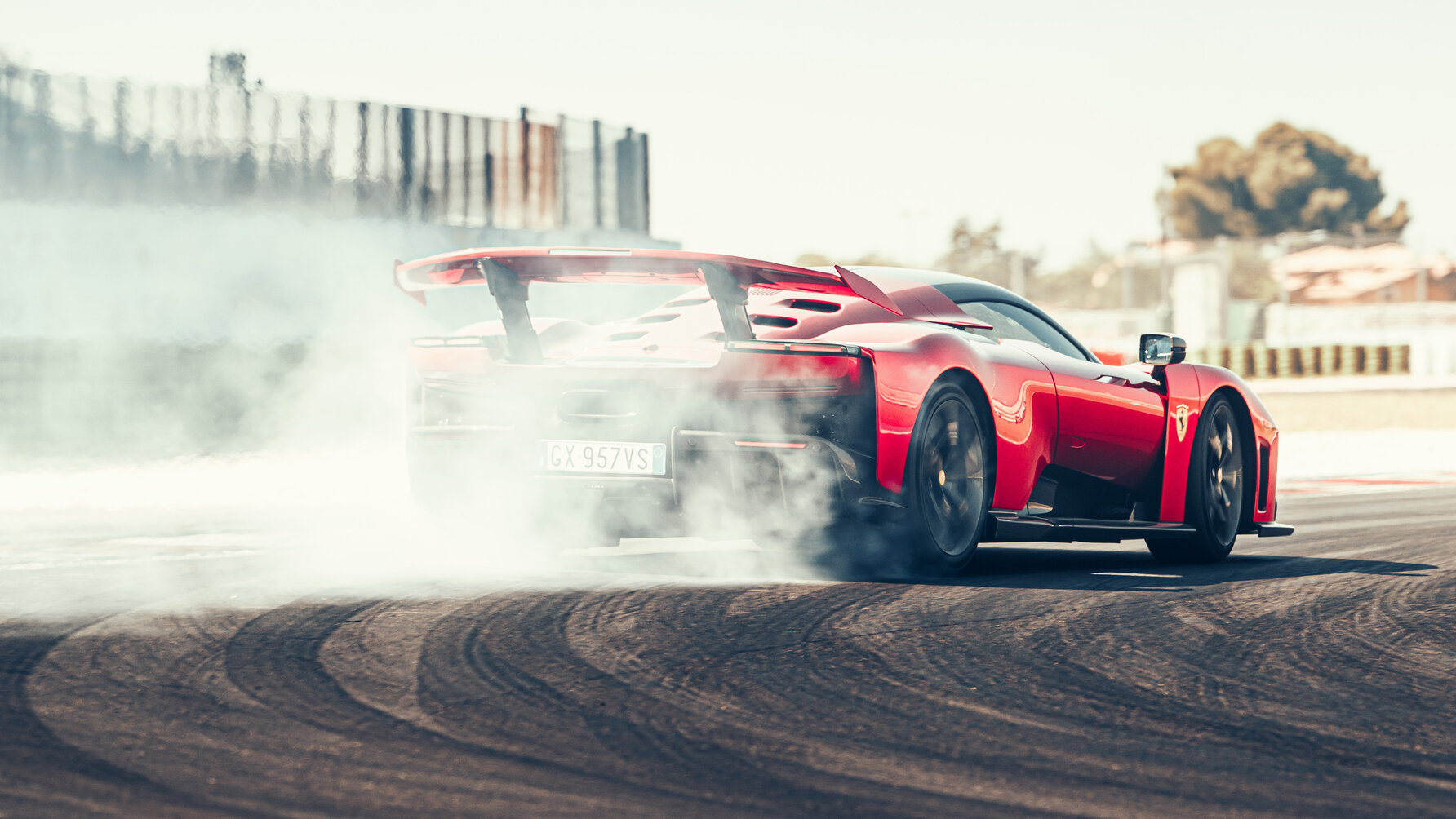
It feels more natural than the SF90, the first Ferrari to use a front e-axle, and although you can just occasionally sense the front wheels are driven, the steering stays pretty pure and the balance feels natural. Understeer can be induced in tight turns and the F80 feels slightly heavier than the Valkyrie, but for the most part it’s got a really nice, neutral phase with a lovely tendency to just edge into oversteer on corner exit.
What about on the road?
Against expectations the F80 is at its absolute best on the road. On track it can feel just a shade prescriptive. Stunningly fast and efficient but not quite as exuberant as it could be. However, on the road suddenly the whole car comes to life. It feels properly adjustable and although the ride isn’t as smooth as, say, a McLaren 750S or 296 GTB at lower speeds, the dampers find their range as you push harder and offer incredible control and a sort of invincible feeling.
And the noise? It’s superb. The F80 is extremely quiet on the outside, but when you’re strapped into the red trimmed driver’s seat there’s a hard-edged V6 howl that sounds every bit as wild as nearly 300bhp-per-litre suggests, plus all sorts of Le Mans Hypercar accompaniments from the electric motors and turbochargers. It’s layered, intense and shockingly enveloping.
The 296 GTB sounds good at times but it feels tuned and slightly thin in tone. The F80 is deep, angry and has a might and authenticity about it that makes all that V12 lament seem a bit silly. The unbelievable gearbox is a star once again. The shift quality is magical but the thunderous upshift crack creates a drama all of its own.
What’s not to like?
Not much. The interior balances motorsport intent with understated execution brilliantly and they’ve even reinstated buttons on the steering wheel to end the recent haptic nightmare. And, as we’ve said, the dynamics are superb. Perhaps the complexity of the powertrain does have its downsides. For example, it can’t deploy endlessly at maximum effort, so just occasionally there isn’t quite the acceleration you expect. On Misano the power would fade just a little once shifting into 5th, for example.
Such is the speed of the steering that the paddles might be best served mounted to the back of the ‘wheel now, rather than the steering column. The engine revs so quickly that an audible shift prompter would be great, too. Trying to anticipate a perfect upshift often results in a brief stutter of rev limiter as the V6 piles on revs so rapidly at the top end. But otherwise, it’s pretty much all good news.
What's the verdict?
The F80 is a complex car and seems to swim directly against the tide of current hypercar trends. It hasn’t shunned technology for pure, analogue thrills, nor given up on absolute performance as a way to enlightenment. It’s a cutting-edge Ferrari and that means it is informed by motorsport best practice and seeks to maximise aerodynamic performance and deliver as much power density as possible. As such you might think it could be the anti-drivers’ car. All efficiency and no involvement.
In truth, that’s utter nonsense. Perhaps it’s not quite as thrilling as the Valkyrie on track, but as a road car it’s simply mesmerising. To deliver such a singular, focussed driving experience despite the many control systems and electric motors (one for each damper, one for each turbo, one attached to the engine, two for the front axle) is some achievement. There’s some real F40 attitude here, but also a hint of the F50’s crystal clear feedback and LaFerrari’s indulgent on-limit manners.
But while the F80 honours the past it’s really about just blowing preconceptions apart and delivering something new, something intensely exciting and underpinned by a deep engineering integrity that perhaps no other company could deliver. In other words, it’s bloody fantastic.




